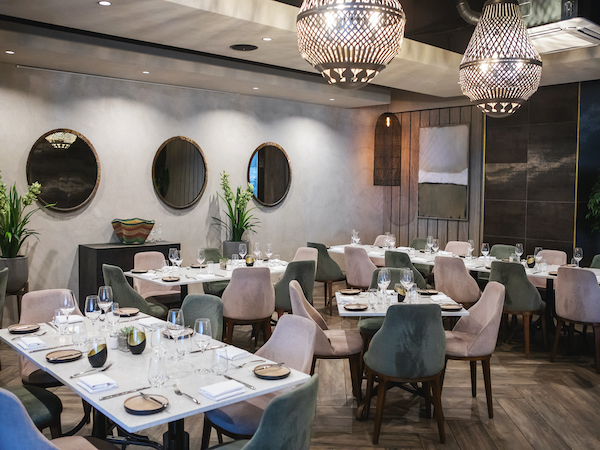News
How restaurants are adapting to lockdown restrictions – locally and globally
Tuesday, July 14th, 2020In line with economies around the world slowly beginning to open up, in the past month South African restaurants have been allowed to reopen for sit-down business. This reopening has prompted restaurants to find innovative solutions to keep their customers safe while providing an excellent dining experience once again. We’re taking a closer look at what’s being done both locally and globally to enforce regulations and create a safe environment, as well as how it all affects the way in which we dine.
The restrictions
In South Africa, sit-down restaurants are required to ensure a 1.5m space between tables and guests, to have sanitiser stations upon entry, and to limit numbers of people (employees and diners) within the restaurant. Masks are compulsory for diners and must be worn throughout the entire meal, with removal allowed only when eating and drinking.
In Europe and Australia, similar restrictions have been put in place – although at the time of writing, the state of Victoria had returned to strict lockdown and restaurants were forced to close once more due to increases in the number of COVID-19 cases. South Africa is the only country where the sale of alcohol has been banned, but one thing that looks the same the world over is masked staff members and the consistent use of sanitisers.
How restaurants are working within the restrictions
While it’s still early days here in SA, we’ve already seen some innovative solutions to the limitations. Eateries such as Clarke’s in Cape Town have set up plexiglass partitions, while Chefs Warehouse at Beau Constantia is offering a pick-up-and-go experience. Most restaurants have also switched to contactless payment options and menus.
Internationally, some restaurants have put a creative spin on it. In Amsterdam, Mediamatic ETEN has placed little greenhouses over each table and is serving its food on long wooden boards to maintain distance between waiters and guests. Meanwhile, a restaurant in Germany, Café Rothe, offers diners fun pool noodle hats to maintain space between them. Generally, the world of dining has become defined by glass barriers, floor markings and even mannequins used to mark socially distanced tables.
https://www.instagram.com/p/CAu_VqmnD1y/
Back on home soil, many restaurants that pivoted their services during levels four and five to offer takeaway and delivery options have kept these intact alongside their sit-down options. Ultimately, for some restaurants, opening their doors only for dine-in isn’t worth it just yet under the current legislation, but who knows which of these innovations our local restaurants will have in place when they are fully operable again.
The diner experience
If you’re heading out for a meal, there are a few things to keep in mind. Firstly, while the limit on capacity might not affect you (and may actually help you feel more comfortable), it does have a significant impact on the restaurant, as it means they’ve had to reduce their staff. This means service might be a bit slower than you’re used to, which means a little more patience and consideration on your end.
You’ll also need to consider restaurant supply chains. As with every other business affected by the pandemic, most suppliers to the food industry (such as winemakers and merchants, vegetable suppliers, and farmers) will have taken the necessary precautions to ensure the safety of their employees and others. This again means less staff, resulting in slower process times and deliveries. This means you may not be able to order certain dishes or that some ingredients might be out of stock.
Last but not least: remind yourself that restaurants are putting these measures in place to keep their doors open while offering as close to a normal dining experience as possible. Bear with them, be compassionate and, most importantly, tip well. Many restaurant staff lost their jobs during lockdown and are now putting themselves in an extremely vulnerable position in order to earn a living. If you can, tip over and above what is expected.












